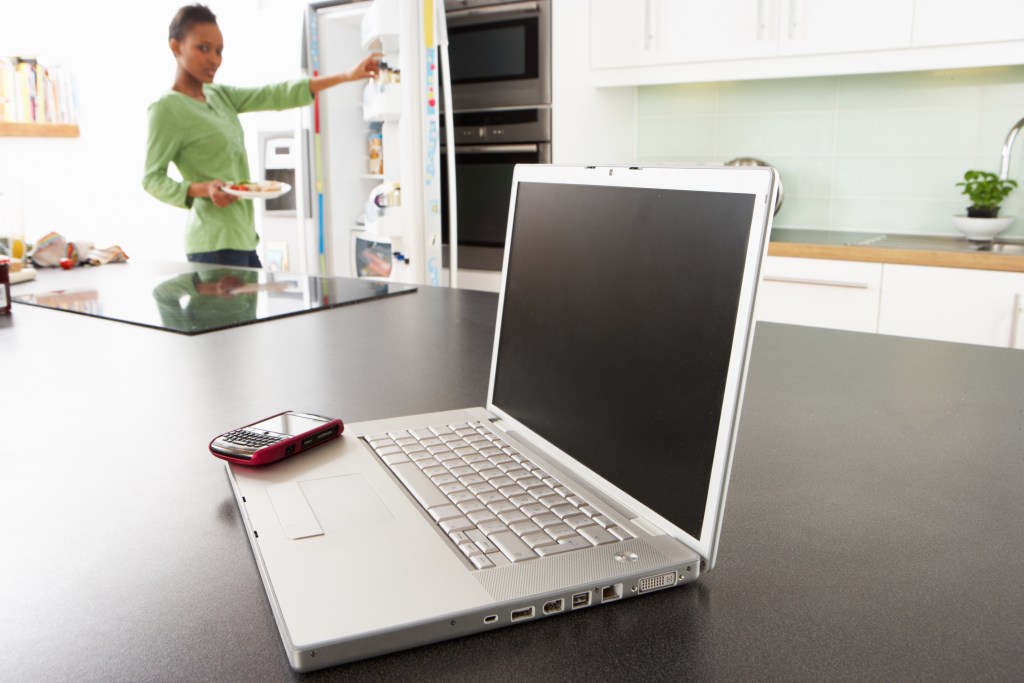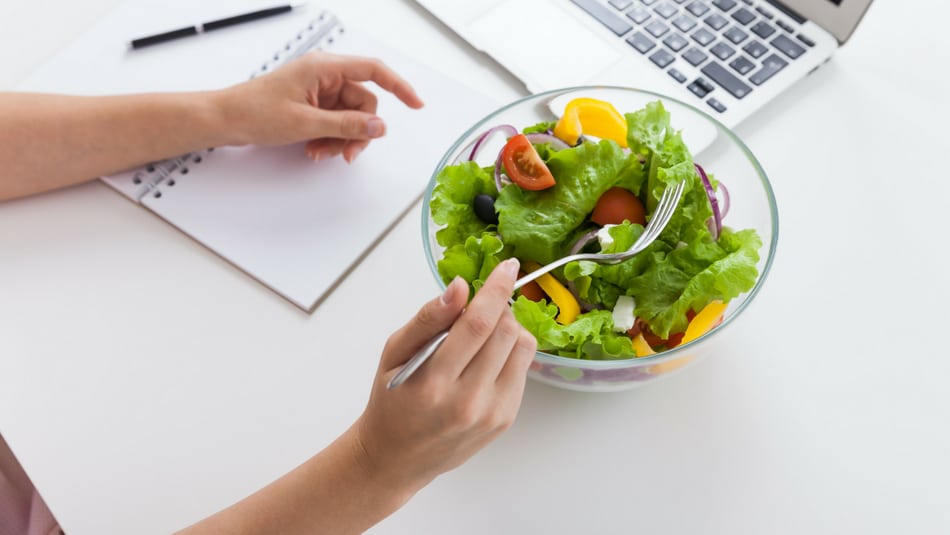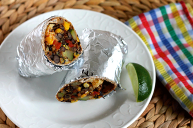We all know the pitfalls of the office break room: doughnuts left over from the morning meeting, someone's birthday cake, Halloween candy (and Christmas and Easter and Valentine's and plain old everyday candy). If you search for healthy eating tips, you'll come up with a lot of advice on how to deal with unhealthy food at work. But what happens when you work from home?
I don't have to wonder if there's leftover cake. In fact, it doesn't matter. If there isn't something snacky to eat (and there's always something snacky to eat), I can whip up something in almost no time. Being a food writer means always knowing how to make five-minute mug cakes.
It's not just the sweet stuff. I don't keep candy in my house, but even "healthy" food can be too much. Nuts are good for you, but one probably shouldn't need go through a giant bag of walnuts in a few days.

When you work from home, the kitchen is right there. It's the easiest place to walk to, you're there anyway getting water or coffee or tea, and you already know where everything is. Plus, sometimes after that call or virtual meeting or finishing up a tough project you just need something chocolate or salty or whatever your celebratory vice is. That's good, but if you're getting it at the office, chances are you get one, if for no other reason than because other people are around.
Working from home, there's no one to see you eat the whole box.
Eating Healthy When You Work From Home
There are so many great things about working from home, not the least of which is flexibility around things like meals. You're not limited to what you bring, what you find in the break room, or the few restaurants around your office. Too often, though, that flexibility translates into snacking on everything in your kitchen because it's a distraction or skipping meals because you're too busy and then eating everything in your kitchen because it's 3 p.m. and you just finished an article on barbecue in Texas and you're hangry.
When you work from home, you've got to have a strategy for eating. I know, it's one more thing on your to-do list, but while break room temptations may not be a danger, if you don't figure out how to handle meals and snacks while working from home, you may end up gaining the "freelance 15."
Here are four strategies to help you stay healthy while working (and eating) from home.
Take a break for lunch.

So many people eat at their desk and one piece of advice for mindfulness and healthy eating is to actually stop for lunch. Get outside and take a walk after you eat, or maybe have lunch with a friend or coworker — it doesn't matter what you do so much as that you give your brain a rest for a bit.
The same holds when you work from home. You still need a break every now and then and lunch is a good time to take that break. Let's face it, crumbs aren't good for your computer anyway. And wouldn't it be nice for your dining table to be just a dining table instead of mostly a desk? (Asking for a friend.)
Make fixing lunch part of your schedule.
One of the beautiful things about working from home is that you don't have to pack a lunch. That means you don't have to drag around multiple separate containers, utensils, and condiments to prep something tasty and healthy to eat. It also means you won't end up staring at the thing you brought from home which you now do not want and then snacking on chips from the vending machine or fries from the deli downstairs.
Lunch doesn't have to be elaborate or take a lot of time to make; you don't even have to "cook." Salads, sandwiches, and grain bowls are all easy to make, especially if you do a bit of advance weekend prep. Don't feel guilty for stepping away from the computer to make your lunch — the break can help you think through a problem or work through a possible plan of action.
Have a plan.
Whether it's a specific time or a set window between eating, making a plan for when you eat can help you combat those random refrigerator dives. You might schedule every meal and snack with precision, or you could plan to let at least two or three hours go by before you eat again.
There's no one right answer here, only what works best for you. If you think about your meals in advance, though, and make a plan, you're far less likely to wing it.
Stock your kitchen with healthy foods.
The corollary to this advice is, of course, don't stock your kitchen with the things you eat too much of or shouldn't eat. If you must wander into the kitchen and get something, it's better for that something to be an apple or a banana or a carrot than a handful of chips or cookies.
If you're not the only person living in your house, try to keep off limits food in a separate cabinet that you avoid.
Create a recipe list that's just for lunch.
When you're planning and fixing three full meals a day at home, you might find your recipe box getting a bit overused. It helps me to have a list of meal ideas that are just for lunch, that way I don't get tired of having the same rotation of meals for both lunch and dinner.
It doesn't have to mean extra work for you. The same roast chicken can be used for soup, burritos, or grain bowls, while a pile of shredded lettuce works for all kinds of salads throughout the week. Check out some ideas we have for healthy lunches to make your own work from home lunch list.




